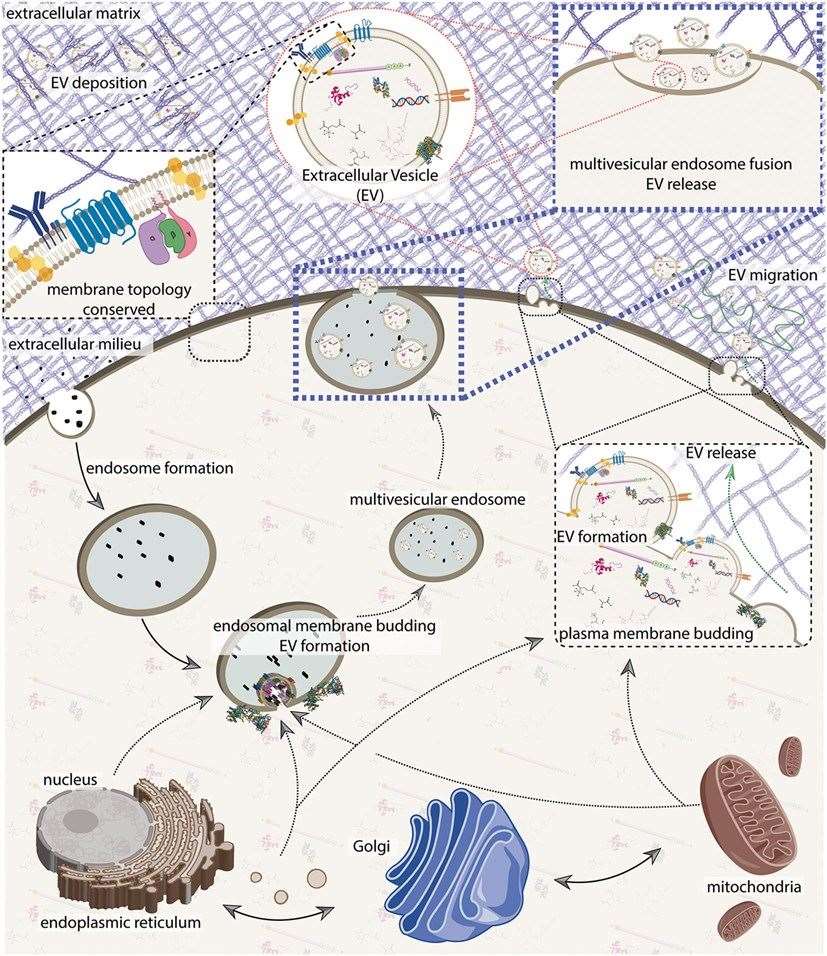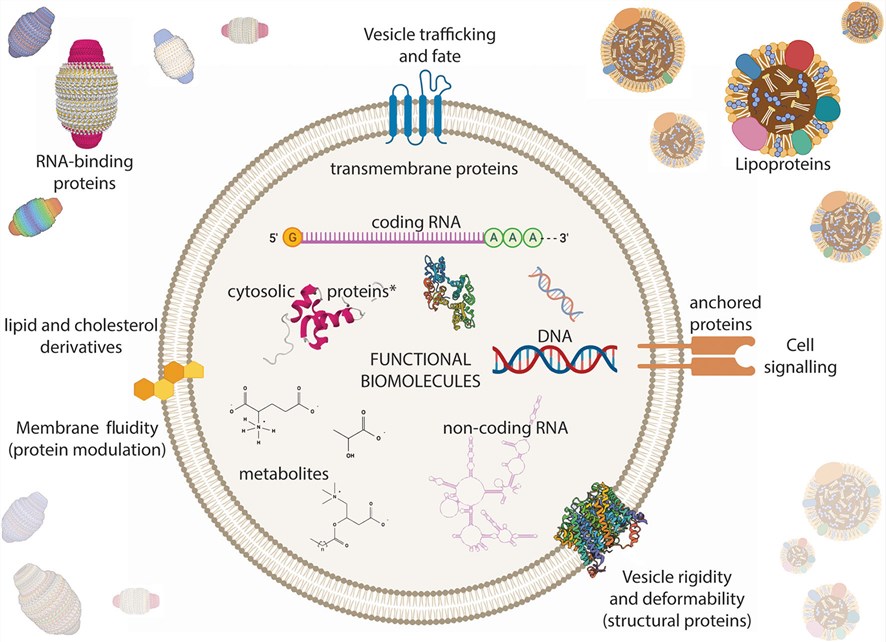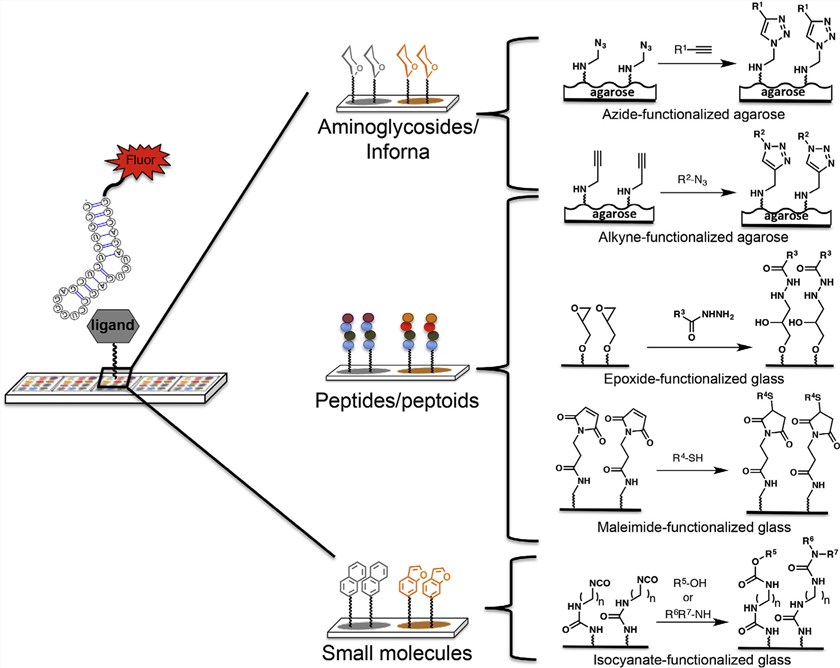Exosome - NGS (RNA Next Gengeration Sequencing)
Extracellular vesicles (EVs) are secreted, nanometer-scale genetic information carriers found in human biofluids. To analyze these data, many tools have been launched to identify molecular groups. Next-generation sequencing (NGS) has been introduced to analyze exosomal RNA. Creative Biolabs has optimized our technology platform with advanced equipment and experienced experts to help our customers accelerate their researches with high-efficient and high-quality RNA sequencing services.
 Fig.1 An integrative model of extracellular vesicle (EV) biogenesis. (Veziroglu, 2020)
Fig.1 An integrative model of extracellular vesicle (EV) biogenesis. (Veziroglu, 2020)
Overview of Exosomal Nucleic Acids
The first report that exosomes contain nucleic acids was in 2007. That research showed that exosomes contain RNAs (mRNA/microRNA) that can be transferred to and remain functional in receptor cells. More importantly, exosomal mRNA can be translated to proteins in receptor cells, and some exosomal miRNA can bind and regulate mRNAs of recipient cells. Furthermore, exosomes also contain DNA fragments, but their function has yet to be understood. Several studies have shown that the transferred RNA can regulate the processes of receptor cells, such as apoptosis and differentiation. These discoveries spark research interest in the field of exosomes as specific cellular messengers for nucleic acid-based cell-to-cell communication.
 Fig.2 Extracellular vesicle (EV) composition in the context of biological solutions. (Veziroglu, 2020)
Fig.2 Extracellular vesicle (EV) composition in the context of biological solutions. (Veziroglu, 2020)
NGS in Exosome
Next-generation sequencing (NGS), as a new technology, has been introduced to analyze exosomal RNA. In 2013, the transcriptomes of human breast cancer cell-derived exosomes using NGS for the first time and found that most of exosomal RNA are the fragments of 28S and 18S ribosomal RNA (rRNA). At the same time, other researchers studied small RNA (sRNA) transcriptomes of exosomes in human saliva by NGS. The analysis shows that exosomal RNA contains not only mRNA and miRNA but also sRNA and piwi-interacting RNA (piRNA). In addition, exosomes display multiple miRNAs, qualitative and quantitative evaluation of their abundance in exosomes is significant, especially tumor-associated miRNAs. Recently, many researchers quantify the miRNAs by using RT-PCR and assessed their abundance in exosomes.
 Fig.3 Strategies for generating microarrays used to screen and profile RNA. (Abulwerdi, 2016)
Fig.3 Strategies for generating microarrays used to screen and profile RNA. (Abulwerdi, 2016)
Services at Creative Biolabs
RNA-Seq with NGS is an emerging method for scientists to study transcriptome. High-throughput NGS has been fastly adapted to various aspects of biomedical research and gradually engaged with certain clinical applications. Actually, NGS has already begun to produce visible benefits in some healthcare settings. In recent years, exosomal RNA has caught a lot of researchers' sight. NGS-based exosome analysis has become an important role in research. As a global leading CRO company, Creative Biolabs has equipped our platform with state-of-art technologies and seasoned experts. We offer various NGS-based exosome analysis services including accurate sequencing and efficient RNA microarray.
Detailed list of our NGS-based exosome analysis services including:
If you are looking for a partner to assist your exosomal research, or you have any other questions about our services, please don't hesitate to contact us for more information.
References
-
Veziroglu, E. M. and Mias, G. I. Characterizing Extracellular Vesicles and Their Diverse RNA Contents. Front Genet. 2020, 11: 700.
-
Abulwerdi, F. A. and Schneekloth, J. S., Jr. Microarray-based technologies for the discovery of selective, RNA-binding molecules. Methods. 2016, 103: 188-95.
For Research Use Only. Cannot be used by patients.
Related Services:

 Fig.1 An integrative model of extracellular vesicle (EV) biogenesis. (Veziroglu, 2020)
Fig.1 An integrative model of extracellular vesicle (EV) biogenesis. (Veziroglu, 2020)
 Fig.2 Extracellular vesicle (EV) composition in the context of biological solutions. (Veziroglu, 2020)
Fig.2 Extracellular vesicle (EV) composition in the context of biological solutions. (Veziroglu, 2020)
 Fig.3 Strategies for generating microarrays used to screen and profile RNA. (Abulwerdi, 2016)
Fig.3 Strategies for generating microarrays used to screen and profile RNA. (Abulwerdi, 2016)








